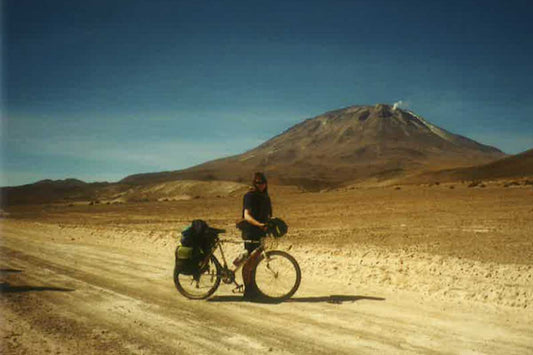Happy socks, happy feet – caring for your FINDRA socks.
Natural fibres
Our socks are made in the UK using 100% natural (or natural blended fibres) and manufactured using traditional knitting techniques that have been around for centuries.
We use predominantly natural fibres in our socks and across all our accessories and clothing as there are many benefits that come from using wool or wool blends, warmth and comfort being two main positives. Another major bonus is that the fibres are eco-friendly and sustainable.
Wool’s surface is very different to typical synthetic fibres, which have a very smooth surface. Instead, wool fibres have a unique surface structure of overlapping scales called cuticle cells that anchor the fibre in the sheep’s skin, and it is the cuticle cells that gives wool the great properties that make it the perfect raw material for outdoor clothing.
This also means that when a wool fibre comes into contact to a rough texture, or surface with on-going friction, the wool’s texture will cause the fibre to wear away and can lead to holes!
Tips for ensuring a long and happy life for your FINDRA socks
The good news is that holes are preventable and below we’ve listed possible causes of ongoing friction with your socks and some simple tips on how to prevent and avoid these issues:
- Toenails. Sorry to get personal here, but toenails need to be kept short and a smooth trim is best. Raggy toenails will rub against the fibre, catching the surface and causing the microscopic scales on the wool to wear leading to holes.
- Shoes and boots. Shoes and boots can be key contributors to holes appearing in socks that are only weeks old! It may seem odd, but the right sock/shoe combination is important and does play a part in ensuring the longevity of your socks. If you are noticing holes appearing not long after you have purchased some socks, have a look at the inside of your shoes/boots/trainers. It may be that the lining inside is worn and causing on-going friction. If the style of the shoe or boot is such that it rubs closely against the surface of the sock then again there will be on-going friction which will wear away at the fibre surface and eventually break it down leading to holes. Shoe deterioration often leads to sock deterioration!
- Flooring. Keeping cosy wearing socks around the house and not wearing shoes or slippers is something that we can all be a bit guilty of, especially in winter and even more so now we’re likely to be at home during lockdown. However, when our socks come into contact with rough or uneven surfaces like textured tiles, natural coir carpets, or a rough floor boards it can lead to snags and cause friction/rubbing, leading to the fibre surface breaking down and ultimately wearing thin. Even non textured surfaces like wool carpets will lead to friction as it’s wool-on-wool, which means there are comparable levels of abrasiveness and durability – meaning they start to wear each other out, and in most cases socks loose! Nylon carpets can be even worse, accelerating the wear of the surface of the socks. Fine merino socks will struggle to survive these conditions on an on-going basis; the socks protect your feet from rough surfaces so we need to ensure we protect the sock from them too.
- It’s just the way we’re made. Our gait can also impact the lifespan of our socks. If we are prone to putting more pressure on one side of the body than the other we can often find that this leads to more weight on the foot leading to pressure points at the heels or balls of the foot. This again can lead to wear and tear in key areas which can ultimately lead to abrasion and holes in our socks.If you find that you persistently get holes in the same place on all your socks then it's possibly related to your gait and might be worth noting if this happens.
-
Washing your wool socks – or washing with the wrong items. With all of our merino, or wool products we recommend you follow our guidelines when caring for them:
- As merino is odour resistant we suggest that you don’t need to wash the item as often as other garments/accessories made from man-made fibres. Yes, even wool socks work in the same way and they really won’t smell if you wear them all week or all month. Honestly, it’s true, we have tried and people still talk to us!
- When you do decide to wash your socks, we recommend you wash them separately or with other woollen garments.
- We suggest that you use little soap powder but NO softener or bleaching agents in the wash.
- We advise that you do not wash with other outdoor garments as hooks and velcro can attatch themselves to the wools in the wash, pulling, catching or dragging the fabric and the knitted stitches causing damage and unnecessary holes.
Our commitment to quality
Designing a great product is really important to us and we take time to design and wearer trial all our products. As a team, we are an active bunch and make sure we put our products through their paces, we are passionate about designing and creating high-quality products that function well and last, and its this passion that's at the core of design and product development process. If any of our styles don’t meet our high quality standards, we will revisit them and redesign them to make sure they are better and more robust.
Getting customer insights and feedback is crucial to this development and on-going improvements in our styles and we welcome your thoughts on how we can continue to make things better.
In summary!
So to summarise, natural fibres are great, merino is a true wonder fibre and when used in clothing it really does make for a great product you can enjoy wearing over and over again. Natural materials have many benefits for you and the planet, but they are not the same as man-made fibres. If your treat them well and with care they will be a life-long companion.
Team FINDRA




